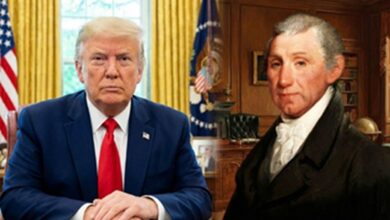The indigenous languages are the protagonists of 2019
Listen this article
The UN declared 2019 the International Year of Indigenous Languages (IYIL2019) in order to raise awareness about the danger of their disappearance

In 2016, following a request made by Bolivia and a recommendation from the Permanent Forum on Indigenous Issues, the General Assembly of the United Nations agreed to declare 2019 as the International Year of Indigenous Languages. The objective is to raise awareness about the existing danger in relation to the loss of indigenous languages, and to think at the same time about new ways of conserving them and giving them the value they deserve.
Leer en español: Las lenguas indígenas son las protagonistas del 2019
According to the Forum, "40% of the 6 700 languages estimated to be spoken in the world were in danger of disappearing", with indigenous languages being the majority. These figures show a terrible fact: linguistic diversity is being lost, which could mean political, legal, health, education and, of course, cultural consequences.
You may be interested in reading: After 200 years of struggle: Afro-Mexicans will be recognized as a minority
Why the indigenous languages?
In order to understand the importance of paying attention to indigenous languages and devoting an entire year to discussing them, it is necessary to take into account several aspects.
Let's start by mentioning that indigenous peoples are usually geographically isolated in the countries where they are located, which in turn generates isolation in the political system and its culture. However, although space is an important factor, it must be borne in mind that these isolations tend to have more to do with the fact that, in most cases, the government in power is not really interested in creating links with these cultures.
Usually, these cultures are forced to adapt to the privileged and dominant culture, but the latter does not approach to the indigenous peoples. This means that indigenous cultures are undervalued and that we do not realize the great cultural weight they carry with them. Customs, rituals, ways of seeing the world and values of these cultures have been maintained for thousands of years and have survived the short and long term changes brought by colonization. They even kept their language when they were forced to learn the languages of the culture that initially came as an invader. Even so, the less you pay attention to these cultural gems that have lasted over time and space, the possibility of losing them is even greater.
According to the IYIL2019, the main factors to take into account for the preservation of indigenous languages are: the knowledge these cultures have, their way of seeing the world, development in sustainability and peace processes, human rights, conservation of culture, values, social inclusion, poverty reduction and international cooperation.
"La lenguas indígenas son tesoros cargados de historia, de valores, de espiritualidad, de conocimientos desarrollados a lo largo de milenios".
— @UN_PGA, @mfespinosaEC.La ONU lanzó oficialmente el Año de las #LenguasIndígenas. https://t.co/7f6JUdq0NO #SomosIndígenas pic.twitter.com/pg6CKWLlW3
— Naciones Unidas (@ONU_es) 1 de febrero de 2019
As we can see, it is not only a cultural loss, but also the immediate consequences of the communication gap that exists. A clear example of this was the Ebola crisis in Sierra Leone, Guinea and Liberia: for those who volunteered and for humanitarian workers, the biggest problem in solving the crisis was communication. The information used to be given in English and French, but, for example, in Sierra Leone only 13% of the women understood English and not fluently, which blocked the process and many lives that could have been saved ended only because of the linguistic gap.
There are thousands of cases like these, even millions. For this reason it is so necessary and urgent to approach this discussion, to appreciate more the cultures that have survived and not to let those that still exist be one of those that are no longer and that we do not remember anymore.
LatinAmerican Post | Vanesa López Romero
Translated from "Las lenguas indígenas son las protagonistas del 2019"





